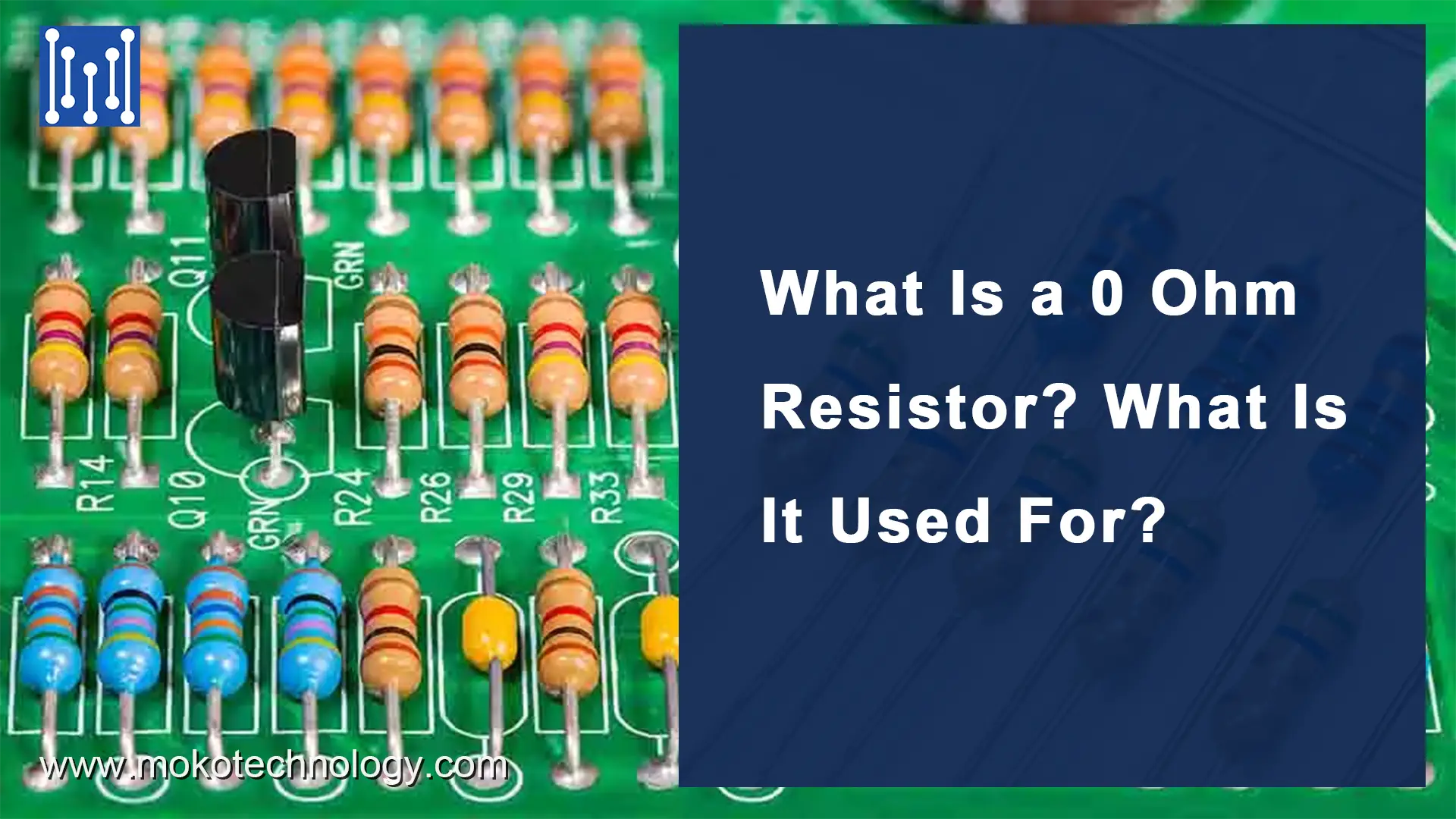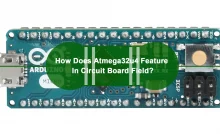What Is a 0 Ohm Resistor? What Is It Used For?


0 ohm resistor, when you first see it, you must be wondered: what’s the function of such an electronic component if it cannot resist anything? But actually, 0 ohm resistor plays multiple roles in circuit design. In this blog, we will give a detailed explanation to this electronic component including its types, applications, and benefits. Additionally, we will discuss essential design considerations when employing these components in electronic circuits.
What Is a 0 Ohm Resistor?
A 0 ohm resistor, sometimes known as a jumper or wire link, is a passive component that contains near zero resistance to electrical current flow. This means it allows current to pass through without any meaningful voltage drop or impedance. Instead of limiting current like a normal resistor, it acts more like a straight wire connection or short circuit between two points. And manufacturers mark these kinds of resistors with three zeros (000) or a single zero (0) on the surface to indicate their zero ohm value.
There are two main types of zero ohm resistors: Wire Wound Zero and Surface Mount (SMD). The Wire Wound Zero resistor is easily recognizable by its single black band printed on the body, and it maintains the familiar shape of ordinary resistor kits. While for the Surface Mount Zero ohm resistor, it is a newer approach to minimize costs, reduce PCB covered area, and enhance simplicity.
Various Usages and Advantages of Zero Ohm Resistors
For PCB designers new to these unique components, questions often arise about their usefulness and application. They may be confused about why bother including additional zero-ohm resistors during the manufacturing phase if jumper wires can achieve the same purpose of connecting components on the circuit board. In fact, zero-ohm resistors serve a variety of essential purposes in printed circuit board design and manufacturing, especially in specific scenarios where their advantages become evident. Below we list some common applications for 0 ohm resistors:
-
Circuit Flexibility and Modifications
0 ohm resistor is featured with excellent circuit flexibility, which allows engineers and designers to make quick and reversible modifications to PCB layouts. By simply placing or removing zero ohm resistors, connections can be easily changed or rerouted as needed during prototyping or troubleshooting.
-
PCB Trace Bridging
One of the primary uses of zero ohm resistors is to bridge PCB traces, effectively connecting two points on the board. This can be crucial for joining different sections of a circuit or creating alternate signal paths, enhancing the overall functionality and performance of the electronic system.
-
Cost-Effective Alternative
Zero ohm resistors are generally more cost-effective compared to other components used for bridging traces. They provide a reliable and low-cost solution for connecting traces without adding significant expenses to the bill of materials.
-
SMD Assembly and Automation
In surface mount technology (SMT) assembly processes, zero ohm resistors can be easily placed and soldered by automated pick-and-place machines. Their compatibility with standard SMT equipment streamlines the manufacturing process, which leads to reduced assembly time and costs.
-
Impedance Matching and Signal Integrity
In RF and high-frequency circuits, zero ohm resistors are used for impedance matching. By carefully selecting and placing these resistors, engineers can optimize signal transfer, reduce reflections, and improve signal integrity in critical applications.
-
Temporary Component Placement
Throughout the assembly process or testing phase, zero ohm resistors can serve as convenient placeholders for components. This enables effortless addition or removal of other elements at a later stage, all without requiring any alterations to the PCB layout.
-
Fuse Replacement and Over-current Protection
In certain scenarios, 0 ohm resistor can be used as fuse replacements to provide over-current protection. When a fault or excessive current occurs, the zero ohm resistor acts as a sacrificial element, protecting other components from damage. This method offers a more accessible and replaceable solution compared to traditional fuses.
-
Current Shunt and Sensing
Zero ohm resistors can be utilized as current shunts for low-current measurement and sensing applications. What we need to do is measure the voltage drop across the 0 ohm resistor, then, the current flowing through the circuit can be accurately measured.
-
Testing and Debugging
During the testing and debugging phase of PCB development, zero-ohm resistors can be temporarily inserted or removed to isolate specific parts of the circuit, facilitating troubleshooting.
Design Considerations when Using 0 Ohm Resistor
When using zero-ohm resistors in electronic circuits, engineers need to consider several design considerations, some of which include:
- Current Handling Capacity
0ohm resistors should be selected based on their current handling capacity. Ensure that the chosen resistor can handle the maximum current expected in the circuit without exceeding its power rating or causing excessive heating.
- Power Dissipation
Zero ohm resistors, like any other component, generate heat when current flows through them. During the design process, it’s important to make sure that the power dissipated by the resistor does not dissipate more power than its rated power, even under maximum current conditions.
- Tolerance and Accuracy
Although zero ohm resistors are generally intended to have negligible resistance, they still have some small resistance value due to manufacturing variations. Engineers should consider the resistor’s tolerance and accuracy, especially if precise resistance values are critical in the application.
- SMT Footprint and Assembly
Ensure that the zero ohm resistor has a suitable surface mount technology footprint compatible with the PCB design and assembly process. Double-check the recommended pad layout and soldering guidelines to avoid assembly issues.
- Thermal Considerations
Ensure that the zero ohm resistor is adequately thermally connected to the PCB or surrounding components to dissipate any heat generated. Poor thermal management can lead to increased resistance and component failure.
- PCB Layout and Traces
Zero ohm resistors should be placed on the PCB with careful attention to signal paths, power distribution, and potential noise or interference concerns. The proper layout helps maintain signal integrity and reduces the risk of unintended coupling between traces.
Takeaways
In conclusion, a 0 ohm resistor, despite its seemingly insignificant resistance value, plays a crucial role in the world of electronics. If you’re curious to learn more information about 0 ohm resistors, you can reach out to MOKO Technology. As a leading EMS company in China, we are highly specialized and have sound knowledge in the field of electronic components. Contact us today and discover how zero ohm resistors can elevate the performance and efficiency of your electronic designs.
Recent Posts
Impedance Matching: A Critical Factor in High-Speed PCB Design
Impedance matching has become a cornerstone of the signal integrity in the realm of high speed PCB…
How to Clean a Circuit Board Safely and Effectively?
It is important to learn how to clean a circuit board properly if you’re working…
Counterbore vs Countersink: Which to Choose for Your PCB?
When designing PCBs, selecting the appropriate type of holes for fasteners is crucial. And much…
PCB Copper Foil: Types, Properties & How to Choose
PCB copper foil is one of the most critical materials in the printed circuit board…
MOKO Technology Launches Vietnam Manufacturing Base in February 2025
Shenzhen, China - February 11, 2025 - MOKO Technology, a leading global electronics manufacturing service…
PCB Solder Mask: What It Is and Why Every Circuit Board Needs It?
While most people focus on the components and copper traces that make up PCBs, there's…


